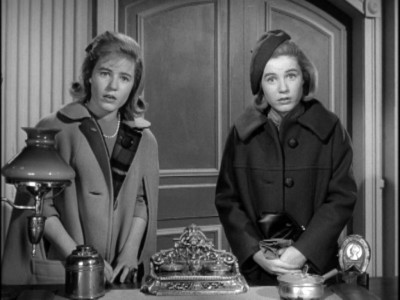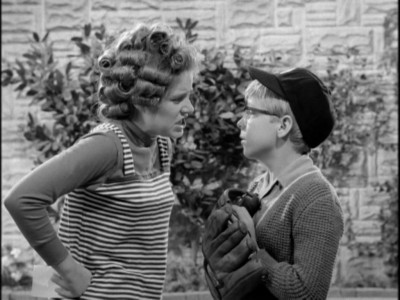- THE PATTY DUKE SHOW circa 1964
The patty duke showsMy group (Mary, Diana and Lauren) have created our Final Project Blog on the theme of comparing teenage depiction by the media over the last 40 years, ranging from the 60s to the 80s to the 2000s.
Is the sometimes sweet and sometimes angry, coniving Patty (Patty Duke Show circ.1964) who loves her parents but fights with her brother, reflect the teenager of thoses times?
"http://www.youtube.com/embed/qQTqKcojrVY" This theme song to the weekely series describes 2 twin cousinns who are raised with different cultural backgrounds but are thrown together for thier developing teen years. The media format is to compare and contrast but it is right under the pixel line that together they make the perfect young woman.

The fifties were a time of post war peace and the beginning of new materialism. Everyone conformed. The Duke family was upper middle class and successful with a beautiful and smart mother at home and a successful NYC paper editor as a dad who was bemused and loving and always there. One wonders how did he get so successful spending all that time at home with mom and the kids?
The media also portrayed Patty as "normal" in her relationship with her brother, Ross, with there off hand insults and arguing.

Patty was described by critics as a "young alien in a teenage human body, speaking an unformiliar language and following particular customs."http://www.youtube.com/embed/gwjUHRkTjo4"
The Patty Duke story line is one of a wacky teenage girl around 15 in the mid 60s who enconters a problem at the beginning of the show only to experience a resolution by the end of the half hour. The show focused on situations , not jokes, as in other family hour comedy shows. Performances of the show's characters were grounded in the reality of everyday life, for this economically affluent family, and acted and reacted in believable ways.
I was reminded of Raby's "storm" when Patty was described "a person who could be manipulative, egotistical fierce and a firestorm." Remembe rthe theme song: "a hot dog makes her losse control?" ut the media has an ideology to hand us as the good girl whose description also inccludes sweet nice caring and vulneralbe. In other words, Patty was "played like a human being with faults galore but vurtuous to the core. " Patty becaome a teenage idol and the parents loved her, too. This was compatable 1964 and the media created an image that reflected those in control. Ideology, be it media or political/social, helps justify the actions of those in power by distorting and misrepresenting reality. The family was rich, one boy, one girl, homeaker, successful breadwinner. There were alot of low middle class people struggling to make in in post world war II America, and alot of women who had to work and be responsible for the homefront, completely, and a show like this disinfranchised them and put illussions or guilt and evny in families that did not measure up.
Patty Duke Show was also an ideal example of SCWAMP. Patty's father ran the show and he was as white and rich and able bodied as they came. I ws surprised to find some people of color in the show, but it was as a clerk. This was a position of authority, in that the black clerk was a license dispenser in the courhouse. The episodes were shot in California to dodge the abusive child labor laws of New York, so more socially liberal input into media production had begun.
I wondered why this type of 'goofy but good" teenage story? Why then? I researched the writer of this first original sitcom show, Sidney Shelton' who was also the writer for later TV shows as "I dream of Jeanie" and earlier theatre and novels. His novels often fetaured determined women who perservere in a tough world run by hostile menand most of his readers were women. He once said" I like to write about women who are talented and capable, but most important retain their feminity. Women have trendous power-their femininity-because men cannot do without it." Mr. Shelton stated that he was also influenced in his writint of the "Patty Duke Show" by author Tilly bagshawe, who at 18 atttended cambridge University single with a 10 month old daughter in tow.
Both the creator of the series and the lead role both suffered from Bipolar Disorder, not disclosed during the fiming. Probably not relevant except in its artistic expresion quality, but interesting.
I think I have expressed my interpretation of the media's representation of teens through this show in both a socially reflective manner, but once again handicapped with the fact that it is such a microscoptic picture of rich white America. If a woman's only strength is her feminity, it is feasable why it would require two people to make one complete "good" female teenage.
cool topic! so unique!
ReplyDelete